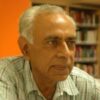Goa — Special Features
TRANSCEND MEMBERS, 12 Feb 2024
Dr. Ravi P. Bhatia – TRANSCEND Media Service
Goa is located on the west coast of India. It is located south from Bombay on the west coast — the Arabian Sea and its distance from Bombay (Mumbai) by road is about 600 km. By air the distance is naturally shorter.
Being on the west coast of India, near Bombay, Goa has very comfortable weather — neither very cold nor very warm. It has many excellent beaches where people can enjoy themselves by standing and even swimming in the tidal waves. In fact these beaches attract many people during winter months from cold countries— Russia, England, Germany Italy etc.
The Portuguese invaded Goa in 1510 by defeating the local Bijapur Sultan. In fact, Goa was Portuguese’ first possession in India. Portugal continued to remain in Goa till 1960 even after India got independence from England in 1947. Free India asked Portugal to leave and grant independence to Goa. But Portugal continued to remain in Goa. After the refusal of Portugal to leave, India sent its military and naval forces to free Goa from Portuguese yoke.
Sensing its defeat, Portugal quickly boarded its naval ships and left Goa. However its presence in Goa for about 450 years has left a perceptible effect in its culture, language and architecture. Goa has today many large churches which have been maintained properly by the present local government. Most people of Goa have become Christians and follow Christian customs. Earlier, some elderly people could speak the Portuguese language. Today those people have passed away and people speak Konkani and even Marathi because of the proximity of Bombay. Of course outsiders who come to Goa speak Hindi and English to interact with the local population.
Facially the local people do not have any resemblance with the white Portuguese people — they have their distinctive looks of the local population. They are however clearly Christian in their mannerism and their attitude towards the Church and faithfully follow Christian customs. The big churches have large gongs which are rung for special purposes. Recently, an important Goan Christian died. The big church rang its gongs to inform the local population about the man’s death. After some necessary procedures the man was buried in the nearby cemetery of the church.
The churches follow the Christian customs and have many nearby properties where these customs are followed. For example many commercial shops do not open to general public till about 8 in the morning. The shops are opened to public only after conducting some Christian rites in the mornings. They toll their gongs to announce special procedures for the local population.
The big churches also have special properties — cemeteries where some important Goan people are buried. The churches also conduct some special days including Sundays as per Christian manner. On Sundays some church institutions conduct special classes for local children familiarising them with basic Christian beliefs and traditions.
Goa has many churches and other institutions that were started by the Portuguese people.These churches reflect the local traditions in architecture, religious beliefs and common Christian customs as understood and followed by religious people’s understanding of these. We are here demonstrating a picture of a local church —St Roque Church which looks beautiful and spacious with large open areas outside the building of the church. Apart from conducting Christian ceremonies in the church, they also occasionally organise some programmes with the participation of local youngsters — musical, sports etc.
We do know that India has welcomed people from different parts of the world along with their religious beliefs and traditions — from Greece, Germany, England, Russia or Persia etc. Now many people come to India — Goa especially in winter which are exceedingly cold for many people from European countries. Delhi, capital of India also has a very cold winter and often polluted environment . Many people from Delhi and northern parts of India often come to Goa to escape the winter weather . They also have fun in the several beaches near Goa.
______________________________________________
 Dr Ravi P Bhatia is a member of the TRANSCEND Network for Peace Development Environment, an educationist, Gandhian scholar and peace researcher. Retired professor, Delhi University. His new book, A Garland of Ideas—Gandhian, Religious, Educational, Environmental was published recently in Delhi. ravipbhatia@gmail.com
Dr Ravi P Bhatia is a member of the TRANSCEND Network for Peace Development Environment, an educationist, Gandhian scholar and peace researcher. Retired professor, Delhi University. His new book, A Garland of Ideas—Gandhian, Religious, Educational, Environmental was published recently in Delhi. ravipbhatia@gmail.com
This article originally appeared on Transcend Media Service (TMS) on 12 Feb 2024.
Anticopyright: Editorials and articles originated on TMS may be freely reprinted, disseminated, translated and used as background material, provided an acknowledgement and link to the source, TMS: Goa — Special Features, is included. Thank you.
If you enjoyed this article, please donate to TMS to join the growing list of TMS Supporters.

This work is licensed under a CC BY-NC 4.0 License.
Join the discussion!
We welcome debate and dissent, but personal — ad hominem — attacks (on authors, other users or any individual), abuse and defamatory language will not be tolerated. Nor will we tolerate attempts to deliberately disrupt discussions. We aim to maintain an inviting space to focus on intelligent interactions and debates.